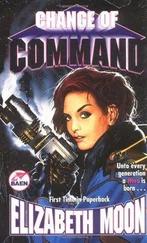Elizabeth Moon - Once a Hero
Здесь есть возможность читать онлайн «Elizabeth Moon - Once a Hero» весь текст электронной книги совершенно бесплатно (целиком полную версию без сокращений). В некоторых случаях можно слушать аудио, скачать через торрент в формате fb2 и присутствует краткое содержание. Жанр: Космическая фантастика, Боевая фантастика, на английском языке. Описание произведения, (предисловие) а так же отзывы посетителей доступны на портале библиотеки ЛибКат.
- Название:Once a Hero
- Автор:
- Жанр:
- Год:неизвестен
- ISBN:нет данных
- Рейтинг книги:3 / 5. Голосов: 1
-
Избранное:Добавить в избранное
- Отзывы:
-
Ваша оценка:
- 60
- 1
- 2
- 3
- 4
- 5
Once a Hero: краткое содержание, описание и аннотация
Предлагаем к чтению аннотацию, описание, краткое содержание или предисловие (зависит от того, что написал сам автор книги «Once a Hero»). Если вы не нашли необходимую информацию о книге — напишите в комментариях, мы постараемся отыскать её.
Once a Hero — читать онлайн бесплатно полную книгу (весь текст) целиком
Ниже представлен текст книги, разбитый по страницам. Система сохранения места последней прочитанной страницы, позволяет с удобством читать онлайн бесплатно книгу «Once a Hero», без необходимости каждый раз заново искать на чём Вы остановились. Поставьте закладку, и сможете в любой момент перейти на страницу, на которой закончили чтение.
Интервал:
Закладка:
As she’d hoped, they headed down the dimmer passage. They moved as she remembered her father’s troops moving, cautious but swift. It was on the basis of that trained advance that she’d planted the shells where she had . . . and when they passed the marked point, the shells burst around them. Esmay had the sound turned down . . . but they hadn’t. They were flat on the deck, firing at nothing, and unable to hear anything but the racket they made and their own ringing ears . . . she was sure of that.
The top level of T-4 was too big for them to check thoroughly; she had counted on that, and on their reaction to resistance. From one position to another, they followed what seemed to be a retreating force of slightly lesser strength. They would be trying to pick up its communications through their helmets . . . surely they would change channels until they found it. And what they heard would sound authentic . . . Esmay had discovered that the 14th had its own Drama Club, its members eager to create and record a script full of dramatic conflict. It had multiple branches, just in case the enemy didn’t follow the main plotline, and one of the communications techs cued the different segments while watching the vidscan to see what the intruders were really doing.
She keyed to listen herself for a moment.
“Hold ’em at Deck 15—we can hold ’em if they don’t come down that inboard ladder—”
“Corporal Grandall, cut off that ladder—”
“—Here’s the ammo, sir, but we’re running—”
Sure enough, on the vidscan, the Bloodhorde had turned back, looking for, and finding, the inboard ladder. Poppers wired into sensors blew off as they started down. Smoke swirled . . . Fleet uniforms wrapped around bundles of insulation moved, fell, were dragged backwards.
“Whiteout! Whiteout! They’re on the ladder—”
“HOLD them—”
“We’re TRYING—NO! They got Pete!”
“—More gas masks! They’re using more . . .”
It would have been fun to watch, like being behind the scenes when an adventure cube was being taped, except that more than half the sites needed someone live, on the scene, to produce a realistic effect. The enemy didn’t know which targets were live, but Esmay did. She had argued at first for a less risky approach—dousing the intruders with that adhesive, if nothing else—but the capture of an enemy warship would be easier if it thought it was coming into a ship controlled by its own people.
Ideally, they’d get to the base of the repair bay just as the ship came out of FTL flight. They’d find the lockers of EVA suits; they’d open the repair bay—it was all set up for automatic use, with new—and newly aged and scuffed—control panels and instructional labels.
Esmay switched to the secure link to the bridge: they had opened a T-3 access hatch and fed an optical link through it. She knew the captain was alive, but in critical condition, now in a regen tank in Medical, which had been purged of the sleepygas. The casualty count was rising, as search teams found more and more bodies . . . most were bodies, but a few had been wounded. Barin hadn’t been found yet.
A jolt like stepping off a ledge in the dark bumped her spine on the chair. She glanced at the clock. An hour early?
“Jump point exit,” said someone unnecessarily. Moments later: “Caskadian System, low-vee exit.”
So they were where they’d expected to be, and in one piece. A low-vee exit meant scan would clear soon, and they’d know how much trouble they were in. Esmay wondered what jump exit would have looked like from outside and shuddered. They could not have survived the whole trip outside, she was sure.
“Prelim scan: six, repeat six Bloodhorde ships. Weapons analysis follows . . .”
Now where were the Bloodhorde intruders? She looked back at the vidscan . . . at Deck 10. Too far up; she wanted them able to contact their own ships, and for that they had to be at Deck 4.
“Release, release!” she said. The communications tech nodded, and switched to the final segment: anguish, terror, harsh breathing . . . resistance melting away in panic. Predictably, the Bloodhorde team followed, and although they came out into the repair bay control compartment with some remnant caution, they didn’t hesitate long.
They had made good use of their data wands . . . one pair went straight to the control centers, and the others to the EVA lockers. The communications tech put on the post-battle tape—if they kept listening, they’d hear individuals trying to find each other, trying to decide what to do, where to take the wounded.
The two who could speak—or at least understand—the Bloodhorde dialect tuned in the output of the communications desk in the repair bay. What would they say to their ships?
The Bloodhorde ship looked nothing like the sleek blackovoids of the Fleet.
“Damn converted tramp hauler,” someone muttered through the comlink. Esmay wished they’d shut up, but she agreed. Slightly larger than a Fleet escort, and perhaps a third shorter than a patrol craft, its hull had a more angular outline suggesting its origin as a civilian freight carrier.
“Part of that’s bare metal,” someone else said. Esmay spotted the oblong patch, glinting dully in the repair bay’s spotlights. The rest was probably the same organoceramic material that most ships used, its scarred uneven coloring suggesting patches of different ages and origins. Along the flank, bright-painted symbols that must mean something to the Bloodhorde. Near the nose, rows of stylized eyes and jagged teeth. She shivered.
The ship edged in, still untethered but now in easy reach of the grapples. Someone nudged her; she followed the gesture to see tiny figures in EVA gear moving on the plates of Deck One. That would be the Bloodhorde intruders, come out to welcome their friends and let them aboard. One of them moved to the control board for the grapples on her side; another stood at the controls for the other set of grapples.
She could not see their hands on the controls, but she could see the result, the shift of the grapple heads as they moved into position, and the sharp pings in her helmet as the grapples released from the heads and then impacted the ship. The sling buffer at the inboard end of the repair bay deployed, as if released by the grapples . . . they hoped the Bloodhorde would think that. She watched the intruder at the grapple controls spin around, and imagined his surprise. But nothing more happened. He made some hand signal to another of his team, out of her sight, then turned back to the controls.
The Bloodhorde ship barely moved, drawn by the retracting grapples. Esmay boosted the magnification on her helmet scan, and watched as the intruder pushed the grapple controls to maximum. She grinned through her tension. She’d thought they would do that . . . the plan would work anyway, but this was a bonus.
The ship moved faster, as all the grapples exerted full power. They must think the sling buffer would halt it if it moved too fast . . . and it would . . . after jolting the passengers a bit.
She watched in fascination as the ship moved slowly, inexorably, past the marked safety point . . . stretching out the grapples again, swinging like a ball on an elastic line. As if in automatic response, another buffer sling deployed—and another. The enemy ship rammed into them, nose first, stretching the first to its limit—one . . . two . . . bands ruptured and flung back across the bay with an indescribable noise. The impact shook the entire bay. Now . . . would they notice anything? The second held, and the third, barely deformed. The enemy ship shuddered, held by the buffer slings’ adhesive coating and the taut grapples behind.
“We did it,” she said aloud. “We got ourselves a warship!”
Читать дальшеИнтервал:
Закладка:
Похожие книги на «Once a Hero»
Представляем Вашему вниманию похожие книги на «Once a Hero» списком для выбора. Мы отобрали схожую по названию и смыслу литературу в надежде предоставить читателям больше вариантов отыскать новые, интересные, ещё непрочитанные произведения.
Обсуждение, отзывы о книге «Once a Hero» и просто собственные мнения читателей. Оставьте ваши комментарии, напишите, что Вы думаете о произведении, его смысле или главных героях. Укажите что конкретно понравилось, а что нет, и почему Вы так считаете.












